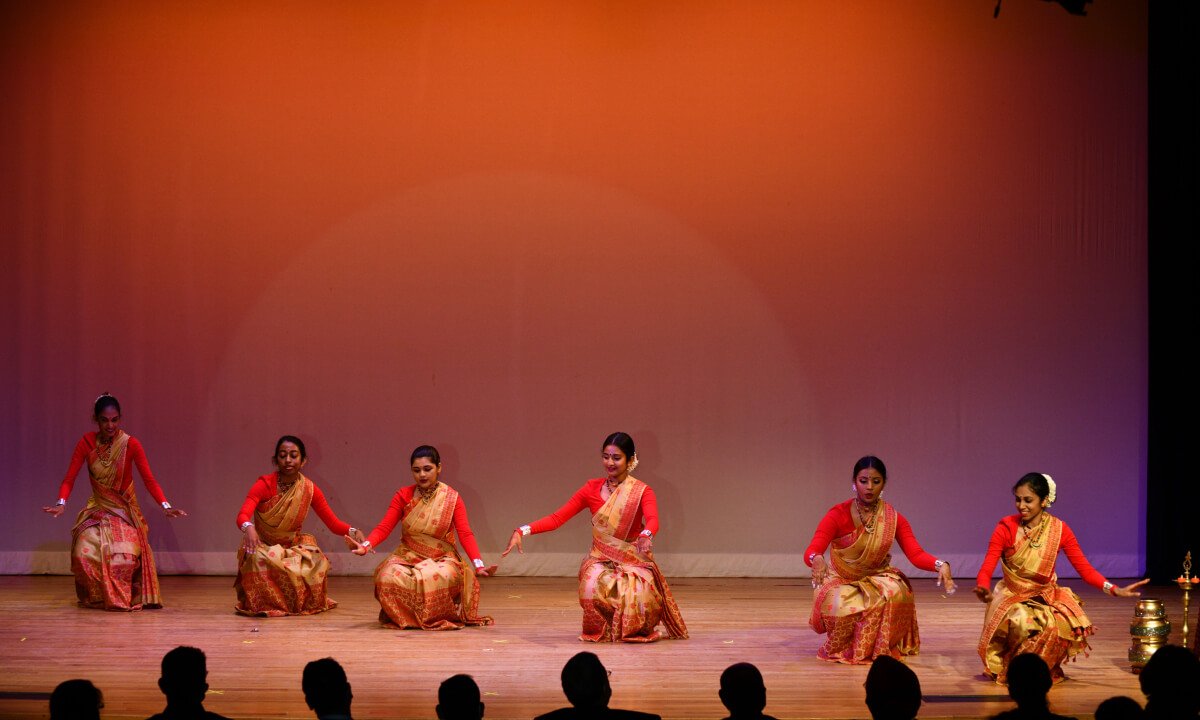folk dance
A vibrant folk dance from Assam, celebrating the Bihu festival with brisk steps and lively hand movements.

The Bihu folk dance is a vibrant and energetic traditional dance from Assam, deeply connected to the celebration of the Assamese New Year and the harvest festival known as Rongali Bihu. Performed in the month of April, this dance marks the onset of spring and the agricultural season, when farmers celebrate the end of their hard work and welcome the new planting season. Both men and women participate in the Bihu dance, forming groups that move rhythmically to the beat of traditional folk music.
Performers heading for a show.
The energetic movements and cheerful expressions celebrate life and symbolize the joyous spirit of the Assamese people during this festive time. The choreography of Bihu dance is characterized by fast footwork, quick hand movements, and graceful swaying, reflecting the vigor and vibrancy of Assamese culture. Women typically perform in a tighter formation, while men have more freedom to move within the performance area. Dancers wear traditional Assamese attire- the women adorn Mekhela Sador, often made from Assam’s famous silk, such as Muga and Pat, and woven with intricate designs. The men wear dhoti, a long piece of cloth draped around the waist, and gamocha, a hand-woven scarf tied around the waist or used as a headwrap. The costumes add a rich visual appeal to the performance, complementing the bright and lively atmosphere of the festival.
Students performing the Bihu dance on stage.
Accompanying the Bihu dance is a distinct array of musical instruments that set the rhythm and pace of the performance. The dhol (a double-sided drum) provides the foundational beats, while the pepa (a buffalo horn pipe), toka (a wooden clapper), taal (cymbals), and baanhi (flute) add melodic and percussive layers to the music. The music and dance embody the spirit of unity, love, and joy that defines the Assamese identity. Over time, the Bihu dance has transcended its agricultural origins, becoming an iconic symbol of Assamese culture and tradition.
The Bihu dance is performed on various stages globally, with one of its most notable performances taking place at the 2012 London Olympics.
The 2012 Olympic ceremony where the Bihu dance was performed.
Need a Bihu show